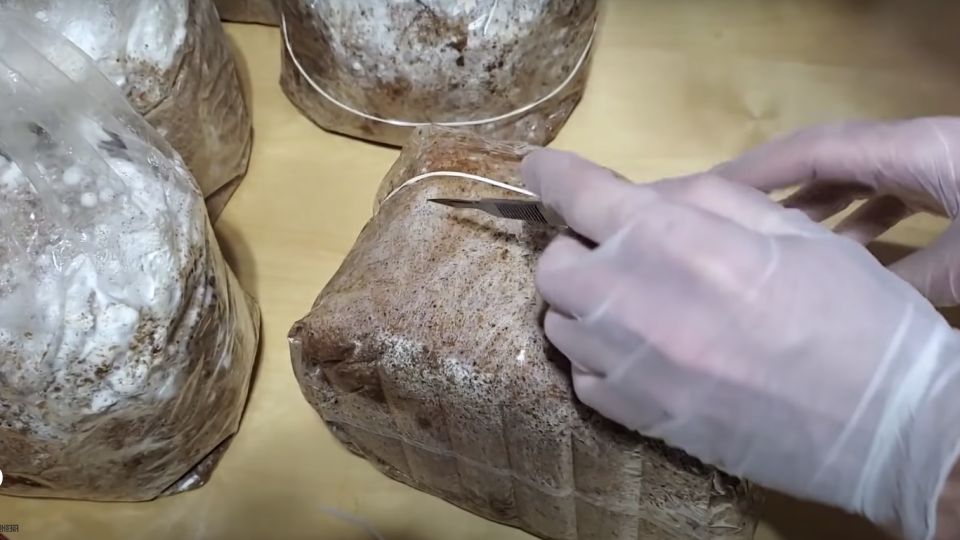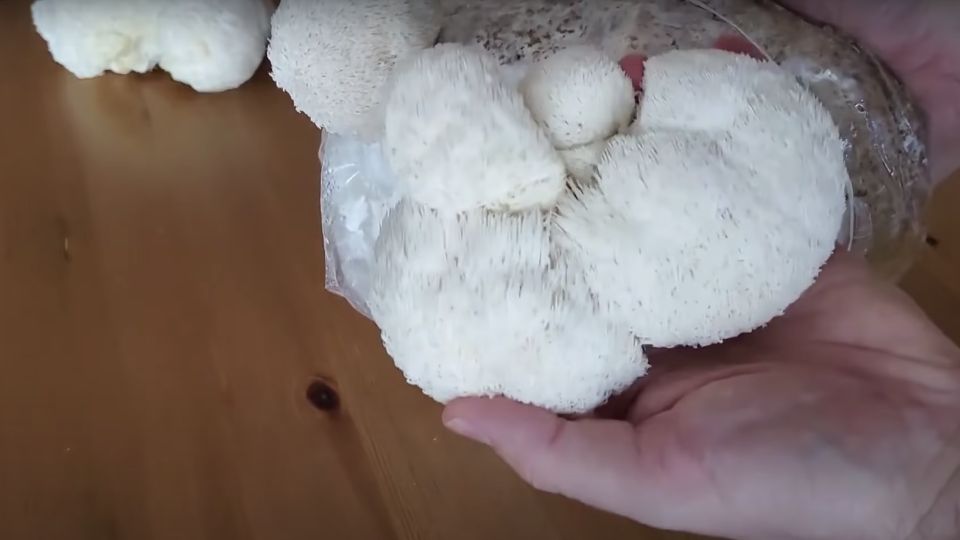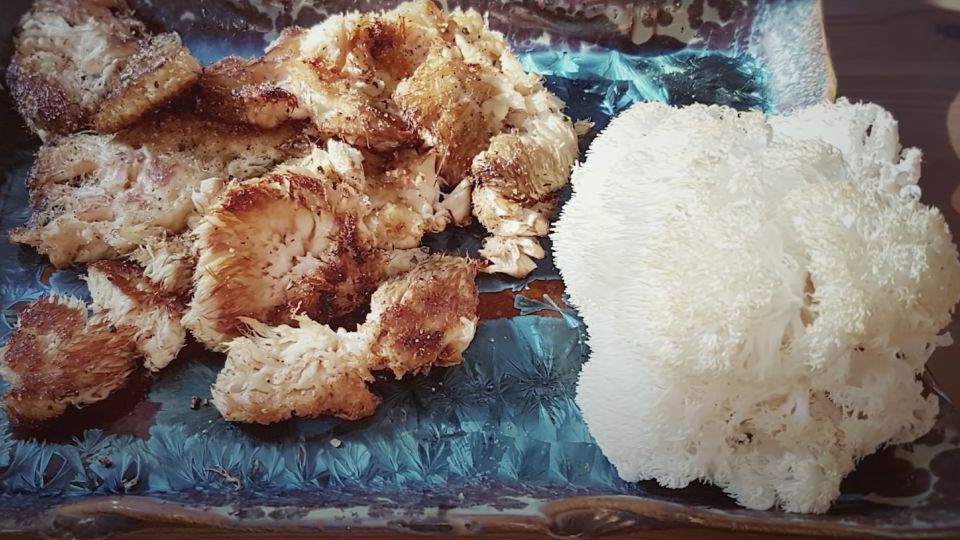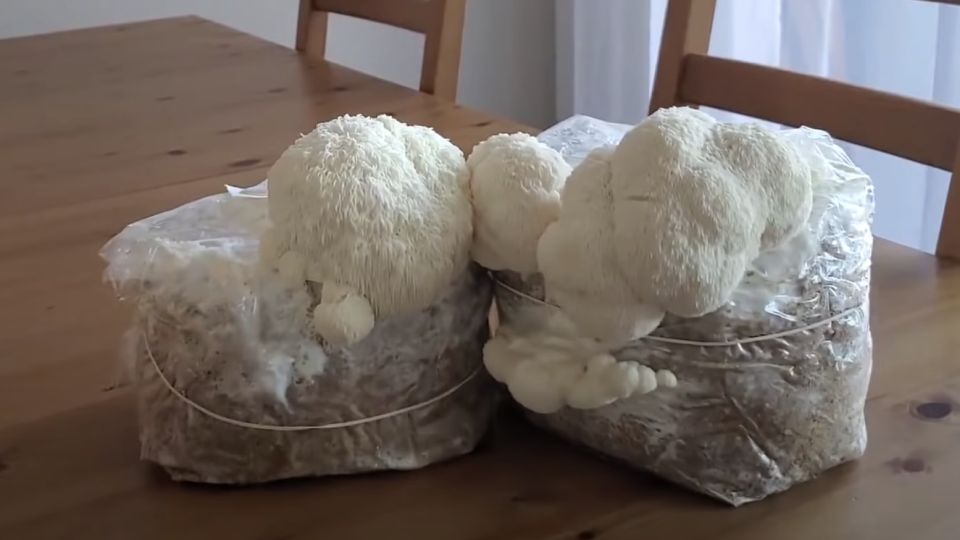Grow Lion’s Mane Mushrooms with a Lion’s Mane Grow Kit
In recent years, the world of gourmet mushrooms has witnessed a surge in Lion’s Mane mushrooms, scientifically known as Hericium erinaceus, which have taken the culinary world by storm with their unique appearance and flavor. These “pom-pom” mushrooms are gaining popularity as gourmet delights, and many enthusiasts are discovering the joy of growing Lion’s Mane mushrooms at home using a Lion’s Mane Grow Kit. If you’ve ever wanted to cultivate these remarkable fungi right on your kitchen counter, you’re in for a treat. In this article, we’ll walk you through the fascinating world of Lion’s Mane mushroom growing, from unboxing your kit to enjoying your harvest.
In this article:
What is a Lion’s Mane Grow Kit?
A Lion’s Mane Grow Kit is your ticket to homegrown gourmet mushrooms. But what exactly is it, and how does it work? Simply put, it’s a convenient package that contains all the essential materials needed to cultivate Lion’s Mane mushrooms at home. It makes growing your own mushrooms so easy.
What’s Inside the Kit?
When you open your Lion’s Mane Grow Kit, you’ll find a fully colonized substrate block infused with Lion’s Mane mushroom mycelium – the fungus’s root-like structure. Make sure you’ve got the kit with non-GMO, all-natural, and organic ingredients. Besides the block, you’ll discover a recipe card that gives you clear, step-by-step instructions for success. If you’re not using it right away, store your Lion’s Mane kit in a cool, dry spot away from direct sunlight for up to 3 months.
How to Grow Lion’s Mane Mushroom with a Grow Kit

Preparing the Lion’s Mane Grow Kit for Growth
1. Unboxing Your Lion’s Mane Grow Kit
When you receive your Lion’s Mane Grow Kit, ensure that you keep the block inside the packaging. This block is the heart of your future mushroom harvest, and you’ll want to protect it. Don’t remove the bag’s wrapping; it’ll keep the block moist for better yields.
2. Making the Perfect Slit for Lion’s Mane Growth
To kickstart the growth process, create a 6-inch X slit on one side of the bag, place the block with the cut side up, and tightly wrap excess plastic around the top, tucking it underneath. This slit will allow the mushrooms to emerge. Mushrooms will grow from this slit, and you might need to widen it slightly as they develop. If you see extra mushrooms growing under the plastic, let them wither so the block produces one large cluster.
3. Moisturizing Your Lion’s Mane Kit
Place your kit in a humid environment to create the ideal growing conditions. You can achieve this by misting the block with water 3-7 times daily with a spray bottle. Maintaining proper humidity is crucial for Lion’s Mane mushroom growth.
4. Ideal Growing Conditions
Position your Lion’s Mane Grow Kit on your kitchen counter or any suitable location where it can receive indirect light. Ensure that it’s not exposed to direct sunlight or extreme temperatures. The ideal temperature range for Lion’s Mane mushroom growth is between 65° to 75°F (18 to 24°C).
5. Patience is Key
Lion’s Mane mushrooms take their time to grow, typically requiring 7-14 days to start appearing. Be patient and resist the urge to disturb the kit unnecessarily during this crucial growth phase.
Recognizing the Right Time for Harvest

Harvest your mushrooms when you spot spines or hairs growing. We recommend picking them when the spines reach a quarter of an inch in length. They’ll be ready to harvest in roughly 14-21 days. Use your hands to gently pull the entire cluster off the grow block in one go.
Maximizing Harvests: Second Harvest Method
Consider turning the kit and making a new incision for a second harvest. Allow the block to rest for 1 to 3 weeks without unwrapping it. After this period, soak it in water for 6 hours. You can even repeat this process for a third harvest, but after that, it’s best to recycle the kit.
You should anticipate a total of 2 to 3 harvests, with each harvest yielding smaller results. The first harvest is expected to produce 2 or more pounds of output.
Tips for Successful Growth
While growing Lion’s Mane mushrooms with a kit is relatively straightforward, a few challenges may arise. Here are some tips to keep your mushrooms thriving:
- Maintain humidity by misting the kit regularly, but not overly soaked. Regularly check the humidity levels inside the plastic bag or humidity tent.
- Periodically turn the kit to promote even mushroom growth.
- Proper ventilation is essential for healthy mushroom growth, and to prevent mold growth.
- Ensure that the plastic bag or humidity tent allows for adequate airflow while maintaining the necessary humidity levels.
- Monitor the temperature to stay within the optimal range.
- Place your kit in an area with indirect natural light or provide artificial, low-intensity light.
- Growing Lion’s Mane mushrooms is not just about the harvest; it’s about the journey.
Cooking Lion’s Mane Mushrooms

Once you’ve harvested your Lion’s Mane mushrooms, it’s time to savor their delicious flavor. Here are some helpful pointers:
- Clean and slice the mushrooms: Before you start cooking Lion’s Mane mushrooms, ensure they’re properly cleaned. You can rinse them in water or wipe them clean with a damp cloth. Then, slice them into thin pieces.
- Sauté or roast: For the best cooking method, sauté or roast your Lion’s Mane mushrooms. Heat a dry pan over medium heat, add the sliced mushrooms, and cook for a few minutes until they turn golden brown and crispy.
- Incorporate into your favorite dishes: Once they’re cooked, Lion’s Mane mushrooms can be a delightful addition to a variety of dishes. They work wonderfully in stir-fries, sandwiches, or simply as a tasty side dish.
- Experiment with recipes: Lion’s Mane mushrooms boast a unique flavor often likened to seafood. Consider using them as a meat substitute in vegetarian and vegan recipes, or get creative with different cooking methods to discover your preferred way to savor them.
Storage
- You can keep the fresh mushrooms in the fridge for about a week. If you have excess mushrooms, consider drying Lion’s mane mushrooms for a longer shelf life.
- To ensure your lion’s mane mushrooms stay fresh longer, store your mushrooms in a paper bag or wrap them in a damp cloth before storing them in the refrigerator. Avoid using plastic, glass, or ceramic containers. This method prevents moisture buildup and allows them to breathe.
- If your mushrooms begin to dry and shrivel, don’t worry. Just chop them up and cook them, and they’ll rehydrate nicely. For serving ideas, check out our recipe blog.
- Properly stored dried lion’s mane mushrooms can last indefinitely. Alternatively, you can choose to freeze them for extended preservation.
Benefits of Growing With a Lion’s Mane Grow Kit
Why You Should Try It:
Easy for You – Lion’s mane grow kit is beginner-friendly, perfect for those starting their mushroom-growing journey.
Health Boost – They offer potential health perks, such as enhancing cognitive function, supporting heart health, reducing inflammation, and boosting immunity[1].
Nutrient-Packed – They are rich in nutrients like vitamins, minerals, and antioxidants, plus protein and fiber[2].
Ready to Grow – Your Lion’s Mane grow kit arrives with a ready-to-fruit, inoculated, and incubated substrate. You can start growing right away.
Generous Yields – They yield abundantly, ideal for those looking to harvest a bountiful supply.
Culinary Delight – These mushrooms are a culinary treasure, elevating dishes like soups, stews, pizza and stir-fries.
Fun and Rewarding – Growing Lion’s Mane mushrooms is an enjoyable and fulfilling hobby, connecting you with nature and rewarding your efforts.
Read More: Lion’s Mane Spiritual Benefits
FAQs
Is Lions Mane legal to grow?
Yes, Lion’s Mane is generally legal to grow for personal use in many places. However, regulations may vary, so it’s essential to check your local laws and regulations regarding mushroom cultivation to ensure compliance.
How long does Lion’s Mane kit take to grow?
A Lion’s Mane mushroom kit typically takes about 14 to 21 days to grow. However, the exact time can vary based on factors like temperature and humidity. It’s essential to monitor the kit’s progress and harvest when the mushrooms are fully developed for the best results.
How much does it cost to grow Lions Mane?
The cost to grow Lion’s Mane mushrooms can vary. A basic kit may cost around $20-$30, while more extensive setups might cost more. Expenses also include substrate, tools, and utilities like water and electricity. It’s wise to budget for these factors when starting your mushroom cultivation journey.
Is growing Lions Mane profitable?
Growing Lion’s Mane mushrooms can be profitable on a small scale, especially if you have a market for them, as they’re valued for their unique flavor and potential health benefits. However, profitability depends on factors like market demand, costs, and your ability to efficiently grow and sell them.
Summary: My Journey Growing Lion’s Mane Mushrooms in Grow Kit
In summary, my journey of growing Lion’s Mane mushrooms from a Lion’s Mane Grow Kit has been a captivating and satisfying experience. These unique mushrooms, with their exceptional appearance and flavor, have added a special touch to my culinary adventures. Unboxing the kit and nurturing the mushrooms through each growth stage was a rewarding process, filled with anticipation and wonder. Harvesting and enjoying these homegrown delicacies brought a sense of accomplishment and a delicious reward. This experience has truly allowed me to appreciate the magic of cultivating Lion’s Mane mushrooms in the comfort of my own home.
References
1. Therapeutic Potential of Hericium erinaceus for Depressive Disorder. Retrieved from https://www.ncbi.nlm.nih.gov/pmc/articles/PMC6982118/
2. Evaluation of the Antioxidant Activity and Anti-Inflammatory Effect of Hericium erinaceus Water Extracts. Retrieved from https://www.researchgate.net/publication/240305753_Evaluation_of_the_Antioxidant_Activity_and_Anti-Inflammatory_Effect_of_Hericium_erinaceus_Water_Extracts

